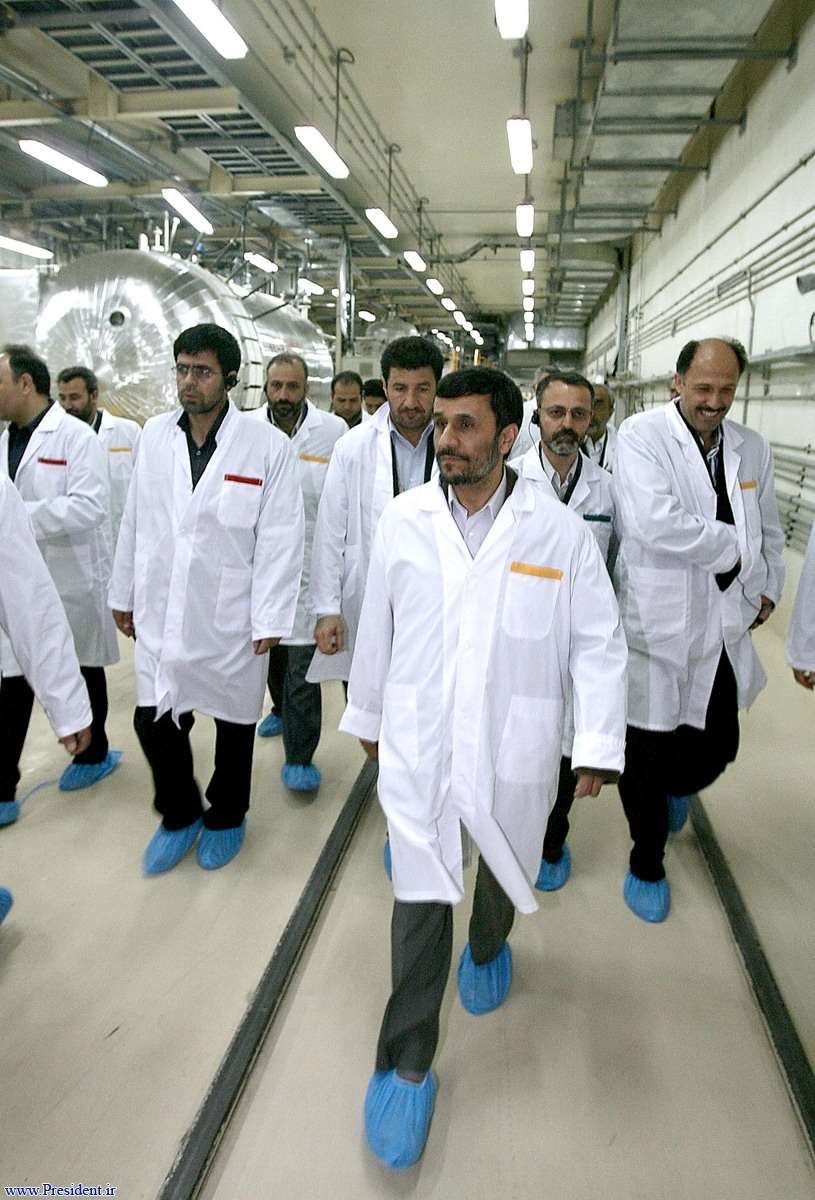Iran's recent actions to bolster its nuclear sites have sent ripples through the international community, raising concerns about the future of ongoing negotiations and global stability. As tensions rise in the Middle East, Iran's strategic moves could either pave the way for diplomatic breakthroughs or escalate into further conflict. The world watches closely as key players weigh their options on how to address these developments.
In a dual-pronged approach, Iran is reinforcing its security measures at critical nuclear facilities while engaging in indirect talks with the United States. This complex strategy reflects both the challenges and opportunities inherent in resolving one of the most contentious issues of our time. With military reinforcements and diplomatic channels open simultaneously, the stakes are high for all parties involved.
Washington Evaluates Indirect Dialogue Amid Military Buildup
The White House finds itself at a pivotal juncture as it considers an Iranian proposal for indirect nuclear discussions. While contemplating this diplomatic avenue, the U.S. continues to enhance its military presence in the region. This dual-track strategy underscores the administration's determination to pursue peaceful resolution but also signals readiness for alternative scenarios should negotiations falter. President Trump has warned that military action remains an option if diplomacy does not yield results.
Analysts suggest that such an approach aims to maintain pressure on Tehran without prematurely closing doors to dialogue. By reinforcing regional forces, Washington seeks to deter potential aggression while keeping lines of communication open. The delicate balance between strength and compromise may prove crucial in shaping the trajectory of future engagements with Iran.
This cautious optimism is tempered by skepticism among policymakers who question whether indirect talks can achieve meaningful progress. Critics argue that past experiences indicate limited success when direct engagement is avoided. Nonetheless, the administration appears committed to exploring every possible pathway toward resolving longstanding disputes over Iran's nuclear program.
Enhanced Security Measures Protect Vital Facilities
Amid escalating threats from adversaries like the United States and Israel, Iran has taken significant steps to safeguard its underground tunnel complexes housing vital nuclear infrastructure. These fortified installations represent critical assets in Iran's defense strategy against potential attacks. By enhancing perimeter defenses and deploying advanced surveillance systems, Iranian authorities aim to thwart any hostile incursions targeting these sensitive locations.
Experts note that strengthening security around existing facilities demonstrates Iran's resolve to protect its national interests amid heightened geopolitical tensions. Such measures also serve as a deterrent to would-be aggressors contemplating preemptive strikes against Iranian soil. Furthermore, they underscore Iran's commitment to preserving its nuclear capabilities despite external pressures urging otherwise.
While these actions align with broader national security objectives, they also raise questions about transparency and compliance with international agreements. Skeptics point out that increased fortification might complicate verification processes required under existing treaties. Balancing legitimate self-defense needs with obligations to uphold global nonproliferation standards presents another layer of complexity in addressing Iran's nuclear ambitions.
Strategic Missile Deployments Near Hormuz Strait
In response to mounting regional instability, Iran has announced the deployment of new missile systems across three strategic Gulf islands near the Strait of Hormuz. Officials claim these installations possess the capability to neutralize enemy targets effectively, reinforcing Iran's defensive posture in this vital waterway. This move coincides with preparations to reply formally to a letter from President Trump urging resumption of stalled nuclear discussions.
By positioning advanced weaponry along key maritime routes, Iran seeks to assert dominance over chokepoints controlling much of the world's oil supply. Such deployments send a clear message to rival nations regarding Iran's willingness to defend its territorial integrity and economic lifelines. At the same time, they highlight vulnerabilities within allied naval operations operating nearby.
However, critics warn that militarizing already tense areas risks exacerbating existing conflicts rather than fostering cooperation. They urge caution in interpreting these developments solely through adversarial lenses, advocating instead for renewed efforts towards constructive dialogue aimed at reducing overall tension levels throughout the Persian Gulf region.
Satellite Imagery Confirms Fortification Efforts
Recent satellite imagery analysis reveals ongoing construction activities at two heavily fortified tunnel systems near Iran's Natanz nuclear facility. Think tanks monitoring these advancements confirm that Iran continues to invest resources into securing its nuclear infrastructure against possible external threats. These findings corroborate earlier reports suggesting systematic upgrades designed to enhance resilience against airstrikes or sabotage attempts.
Technological improvements include installation of state-of-the-art detection mechanisms capable of identifying intrusions well before reaching target zones. Additionally, expanded storage capacities ensure adequate protection for sensitive materials stored deep beneath layers of reinforced concrete. Together, these enhancements reflect Iran's prioritization of long-term sustainability for its nuclear enterprise amidst challenging circumstances.
Despite these visible commitments to safeguarding domestic assets, some observers remain concerned about implications for regional arms races spurred by perceived escalations. Calls grow louder for inclusive frameworks promoting mutual trust-building initiatives capable of addressing shared security concerns among all stakeholders affected by current dynamics.
Diplomatic Channels Strengthen Ties With Allies
Against the backdrop of intensified nuclear talks, Iran's foreign minister prepares to deliver Supreme Leader Ayatollah Ali Khamenei's personal message to Russian President Vladimir Putin during an upcoming bilateral meeting. Although specific details remain undisclosed, officials stress the importance attached to maintaining strong alliances with influential global partners during turbulent times. Such gestures emphasize Iran's desire to broaden support networks beyond traditional boundaries.
Engaging directly with Moscow allows Tehran to explore collaborative opportunities aligned with common interests related to energy markets, counterterrorism efforts, and regional stability initiatives. Simultaneously, cultivating closer ties helps offset isolationist tendencies imposed by Western adversaries pursuing restrictive policies against Iranian interests. Diplomats hope that sustained engagement fosters greater understanding between disparate viewpoints contributing positively toward eventual resolutions.
Nevertheless, skeptics caution against over-reliance on single-axis partnerships which could limit flexibility in navigating multifaceted challenges ahead. Encouraging diversified relationships based on reciprocity rather than dependency promises better outcomes ensuring balanced representation of diverse perspectives moving forward.

